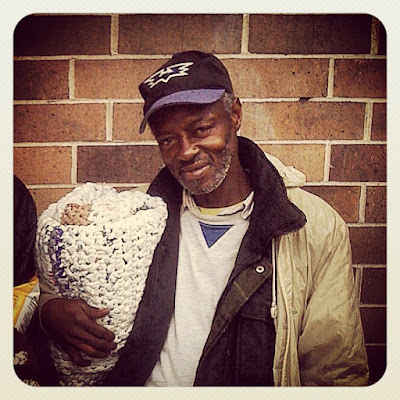How Terminology Affects Those Experiencing Homelessness
“Never worry about numbers. Help one person at a time and always start with the person nearest you.” — Mother Teresa
Whether people want to admit it or not: Homelessness, poverty, and the need for housing are severe problems in Auckland and Chicago. In response to what I've been noticing and experiencing, I've been writing a post about 7 Differences and 7 Similarities between the 2 cities I've lived and worked in. After realising writing this will be a long journey, I've decided to post each "difference" and "similarity" as separate posts, as well.
Here's the 4th Difference: Definitions of homelessness matter. Homeless counts matter. Why? Because they're used to establish policies, generate funding, and build housing that affects those experiencing homelessness.
My friend Dan was a Vietnam veteran. Depending on which season or year it was, he would sleep on cardboard and under blankets behind the local clinic, in a tent under the Lawrence viaduct, or in his bed at the CCO shelter. When the weather got rough or he needed a little peace and quiet, he'd stash his bedding in a safe place, make sure his backpack was secure and ride the train to the southside, where he'd get some much-needed shuteye at his elderly mother's place.
This was Dan's routine for over 2 decades, he experienced homelessness for over 20 years, yet he wasn't always counted in Chicago's annual homeless Point-In-Time count. In fact, he was often missed, because he'd go to his mother's! One evening every year, hundreds of workers and volunteers go onto the streets, under the bridges, on the trains, and into homeless shelters to find those experiencing homelessness, ask pointed questions, and count them. This survey is always done in late January, around the coldest time of the year, around the snowiest time of the year, and there's a simple rule in this PIT count: if you don't see them, you don't count them!
Just as Dan wasn't counted when he went to his mother's to escape freezing to death, many others find their safe places and aren't counted. Friends and family of rough sleepers know how deadly a Chicago winter can be, so they're willing to give up their couches or risk eviction for having a guest for a couple months, causing the numbers of those sleeping on the street to definitely dip. Did you know that if someone lives in a tent, and if they're working their shift on the night of the count, they're not seen, so they're not counted? The survey misses so many and leaves many unanswered questions, like: how can anyone genuinely count every single person who sleeps on Chicago's extensive public transportation system?
These aren't meaningless numbers, they carry a lot of weight. If the numbers are low, it looks as though Chicago doesn't have a homelessness problem. Not only that, the PIT count is used to determine vital things like how much funding is needed, how to allocate that funding, whether there's a need for more subsidized housing, and what policies to focus on. When Dan isn't considered homeless, another senior citizen isn't counted, another veteran isn't counted, another chronically homeless man isn't counted, and fewer policies and less funding go toward those demographics.
It is also important to note this city's narrow definition of homelessness: it includes only those who are rough sleeping and residing in shelters. In 2021, the PIT count was done on the evening of January 26, and here are the findings: Chicago has an estimated 4447 people experiencing homelessness. 3023 people are residing in shelters and an estimated 702-1454 people are rough sleepers.
The Chicago Coalition for the Homeless does its own count. They don't receive any government funding, giving them the freedom to show the extent of the problem and to advocate for more funding and housing. They estimate 65,611 folk in 2020 experienced homelessness. This huge disparity in numbers comes from how the 2 agencies define what "experiencing homelessness" is. CCH finds it imperative to add to the City's narrow definition by including those who temporarily stay with others (doubling up) because of financial hardship or housing loss.
Auckland's definition of homelessness is a lot broader than Chicago's, as it includes those who are in overcrowded places, sleeping in garages or couch hopping. Here's a brief look at Aotearoa's estimates from 2018: 41644 experienced homelessness. 3522 are rough sleepers (including those in vehicles), 7567 are in an emergency or transitional accommodation, and 30,555 are temporary residents in severely crowded dwellings.
Dan's precious life mattered. Dan eventually moved from homelessness and into housing. Dan has now moved on to his next life. Dan, I miss you, my friend. His name is so much more than just a number or a definition, but definitions and numbers do matter, for, without them, policies aren't made, funding isn't provided, and housing isn't built.
Links for the above numbers: PIT Count doc, CCH article, and NZ numbers
My intent in writing these is to break barriers, create awareness, bring justice, and provide compassion for those who are some of society's most vulnerable members, for those experiencing homelessness.




Comments